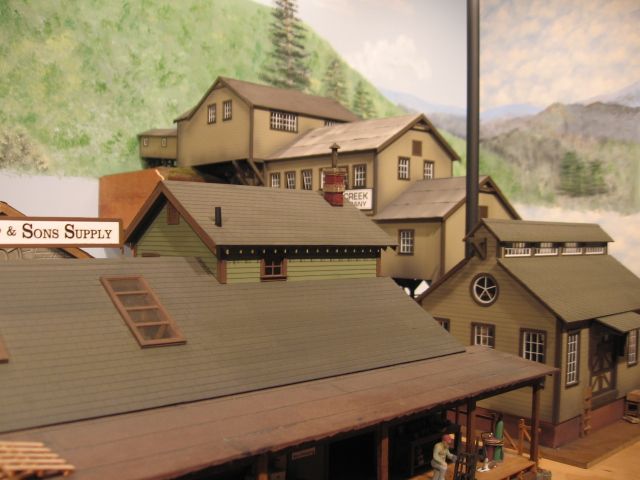You need a pile of wood near the campfire. Campfires consume a lot of wood. Usually there is a stone ring around the fire to contain the hot/burning material. Most fires are at least level, put it in a hole you have two problems. Doesn't get air as well. Subject to rain water filling the pit. IMO. We have done chicken on a camp fire spit like pictured, consumes a lot of wood and time. Takes close to 4 hrs to do chickens (small) on a spit, properly. You are also roasting your hands/arms and on occasion your eye brows.
Breakfast: Eggs and bacon. Two days down river, Sausage and Pancakes. We have been know to add extensions, (2 ft), to the fork and spatula, which allows a little more comfort and less burned forearm hair. Smoke adds to the flavor.
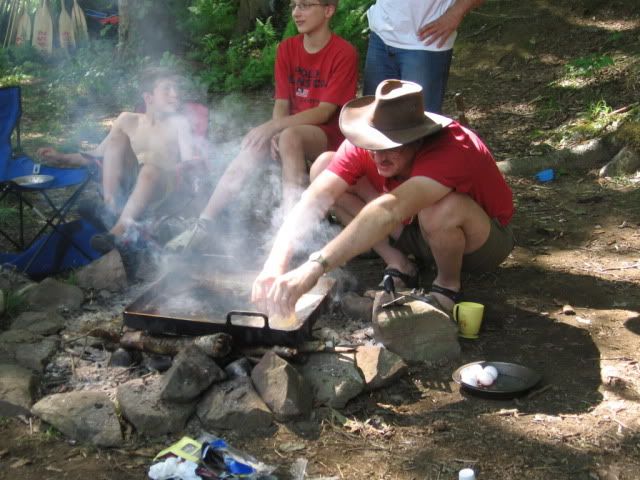
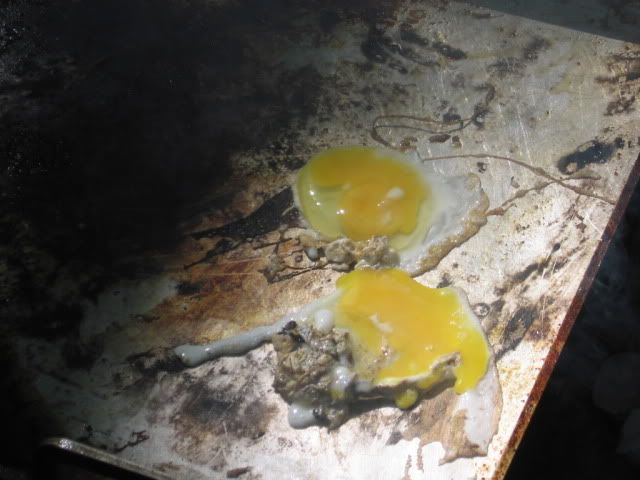
Chicken on a spit, a couple of years later we figured (2) spits worked better than one, allowed the chicken to be better centered in the fire. The end chickens on the spit were always just barely cooked. One chicken per three people. 
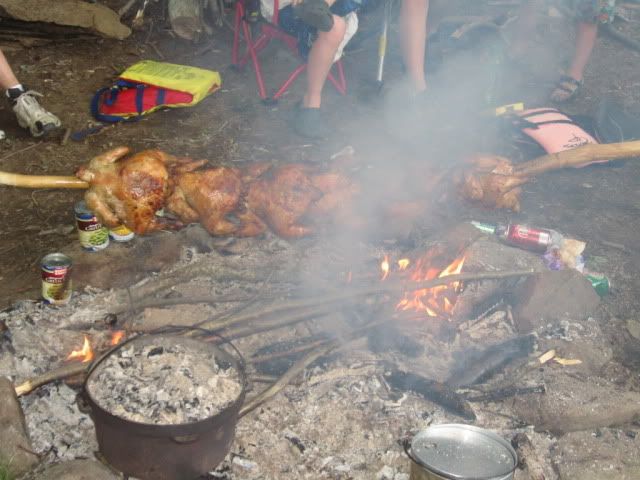
Dutch oven, bottom left, with hot coals on the top, is for cooking biscuits. Large cooking pot bottom right is potatoes, eventually mashed. There is also pudding and ice cream being done for the evening meal. Note that all this hardware is via canoe. Backpacking meals are nowhere near this intense.
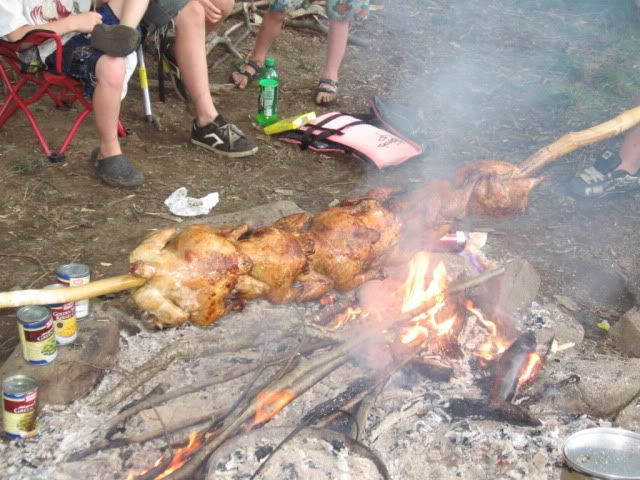
Gathering wood is a large project. Dead fall material that is not green. Surprisingly there is enough in the area for a couple of days of camp fire.
Coffee/Tea/Hot water is done with a backpack friendly gas or butane/propane stove. We use two, (2 gallon,) galvanized metal buckets, to heat water/wash, cleaning water. One bucket is with detergent for cleaning, the other bucket is hot boiling water for rinse. Clean-up is a large part of the project.
Putting the fire out is another major project. Being sure it's out requires a lot of water. Another use for the 2 gallon galvanized metal buckets. We have put fires out that others have started.
 Have fun with that camp fire
Have fun with that camp fire .
.
Mike CT 


